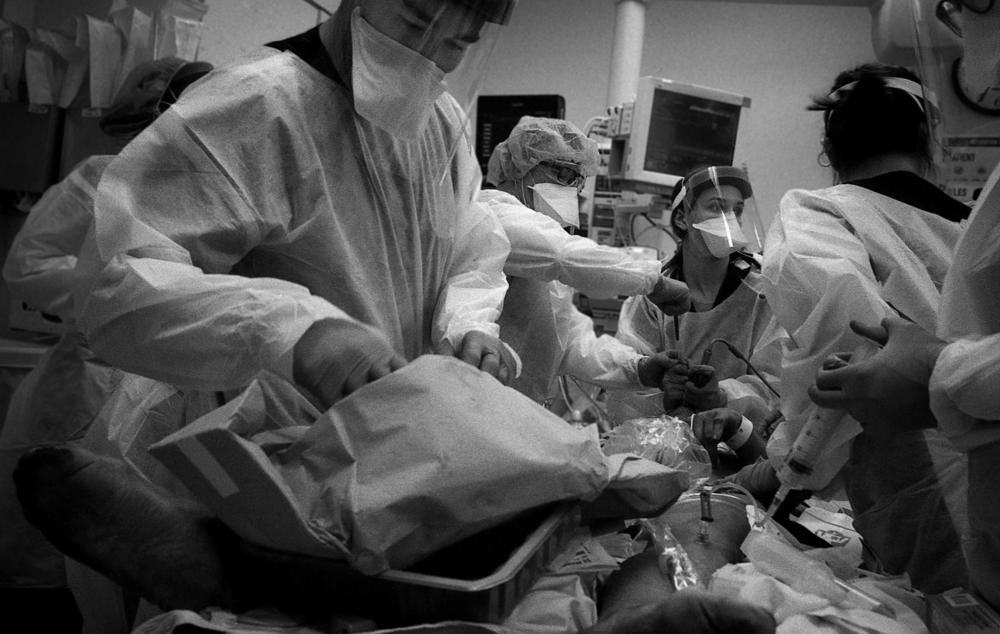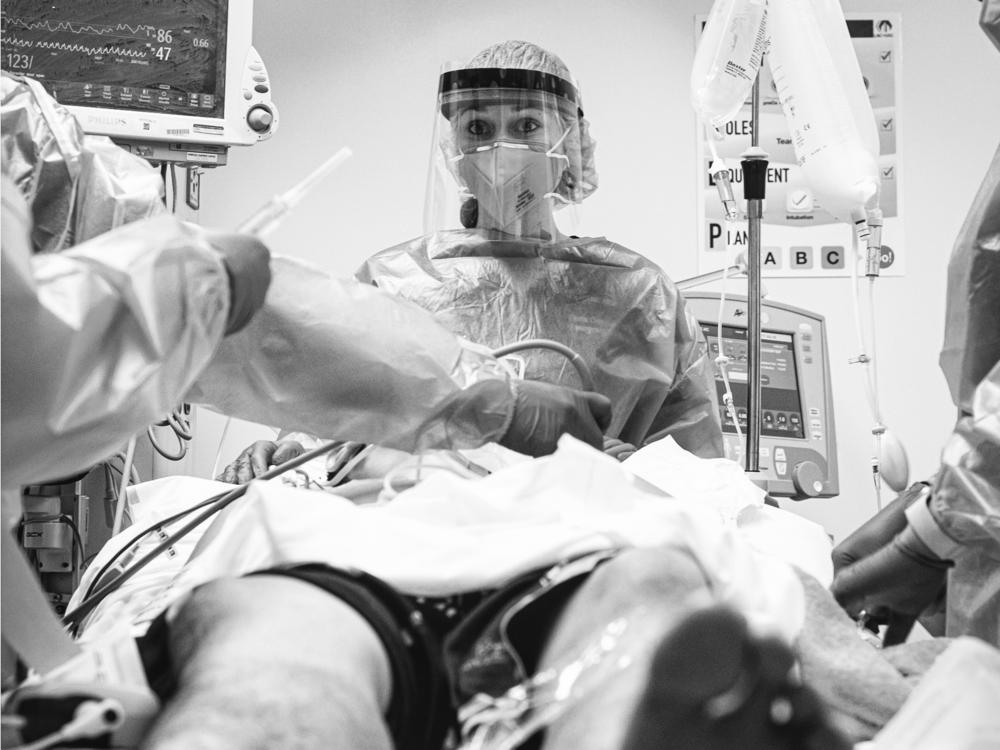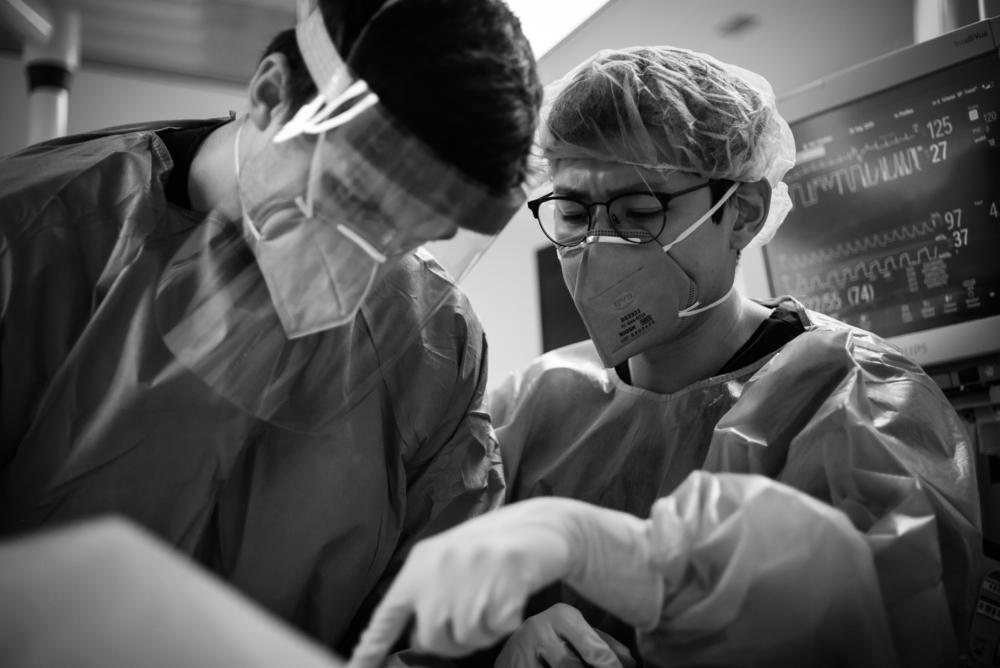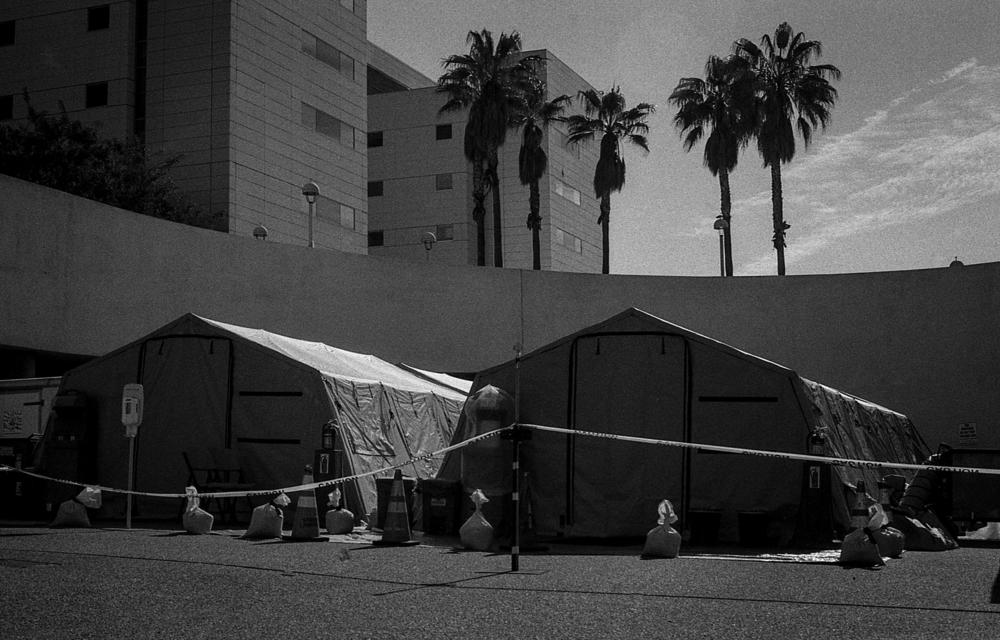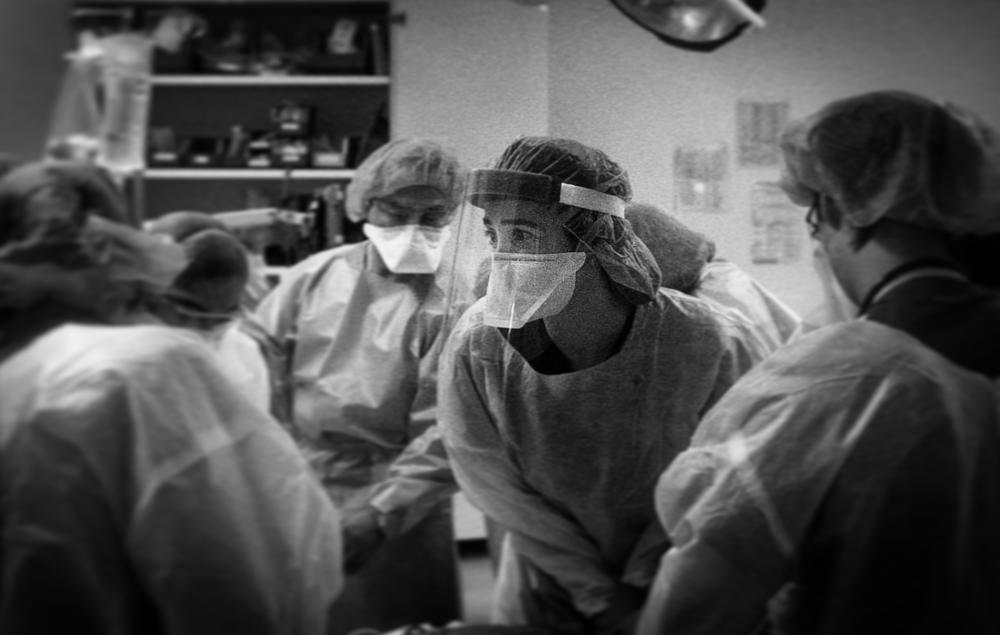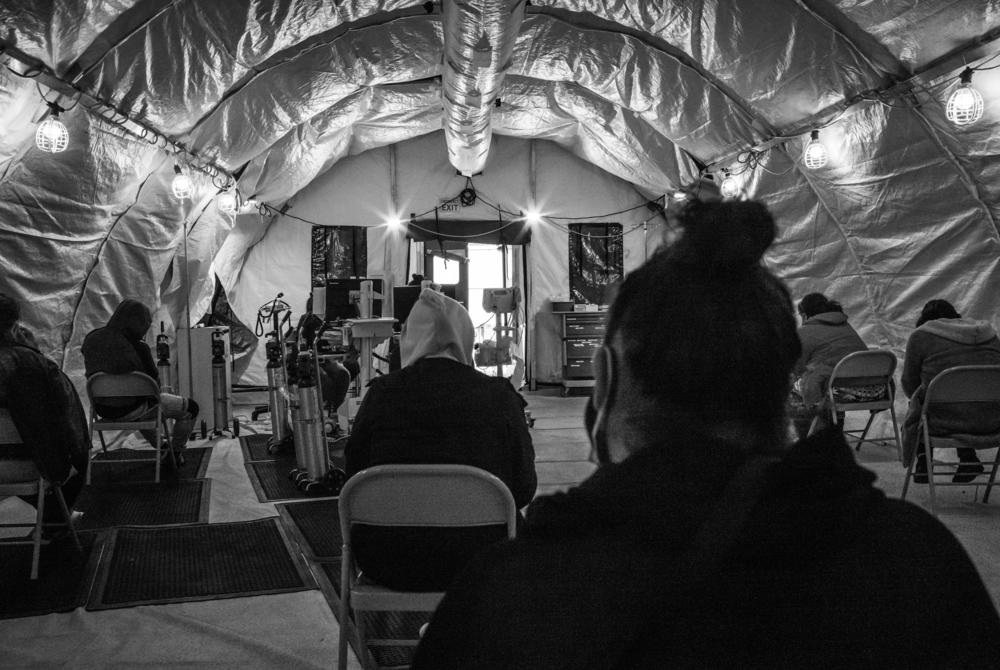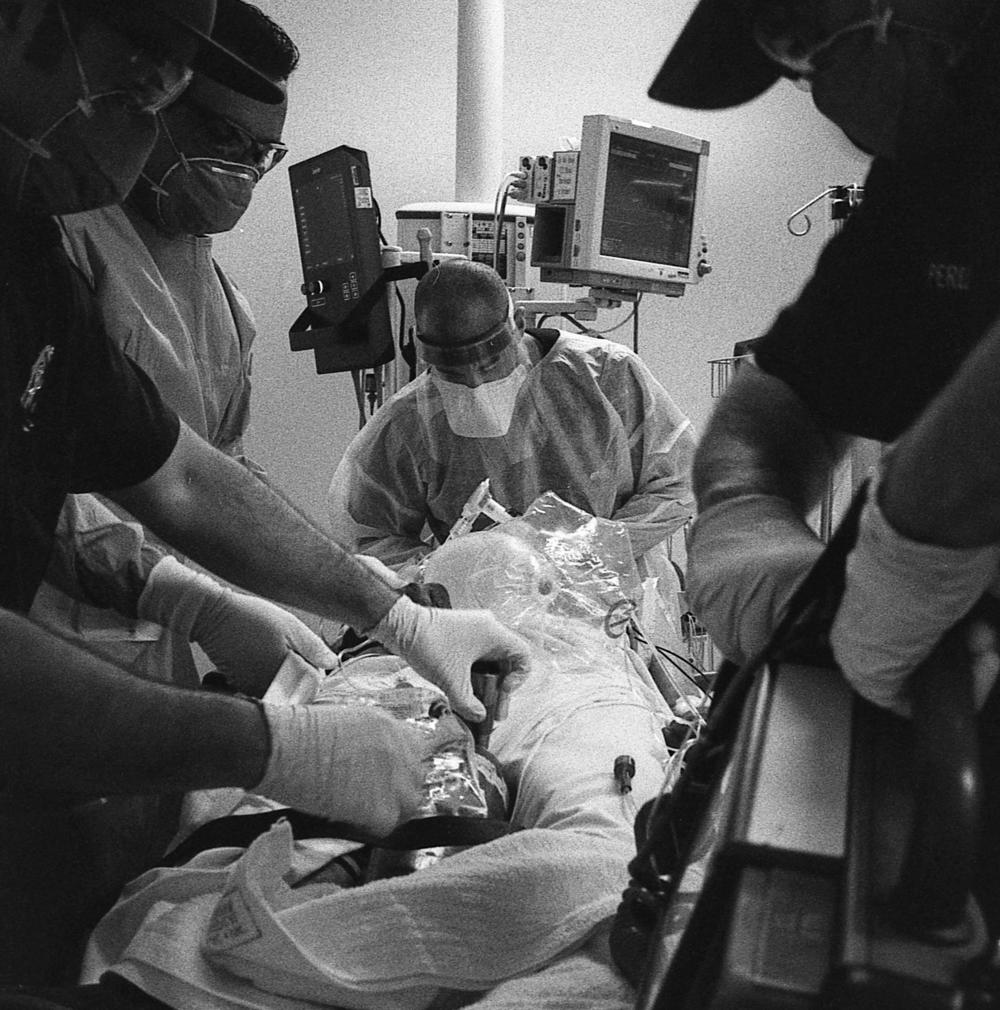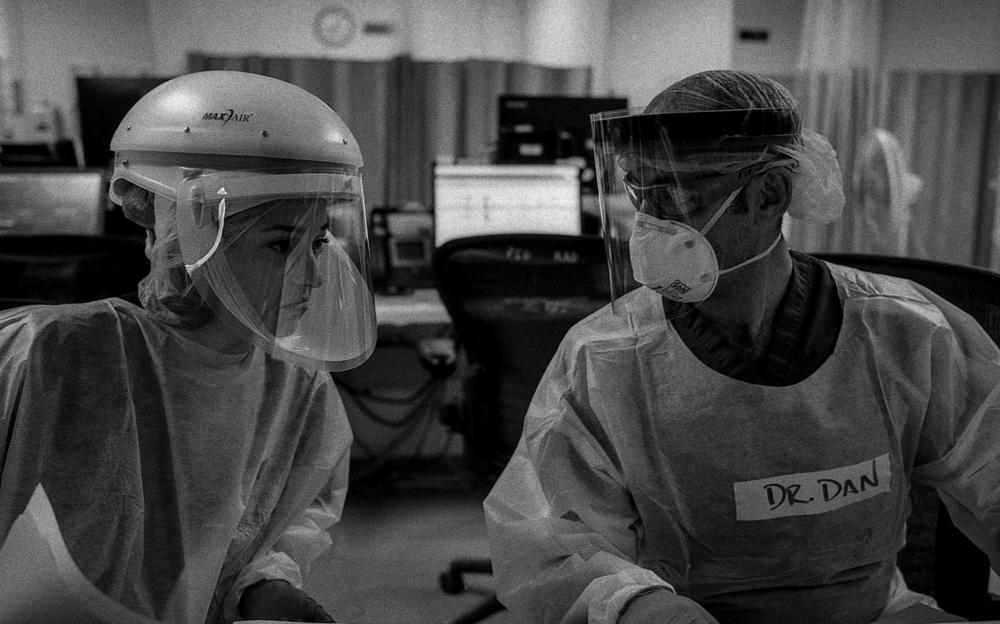The 2025 ACC InVenture Prize at 7 pm
Section Branding
Header Content
'The Essence Of Truth': A Doctor's Photos Document The COVID-19 Crisis In The ER
Primary Content
In the midst of a pandemic that is taxing medical workers like never before, a doctor in a Los Angeles hospital turned a camera toward his colleagues.
Dr. Scott Kobner is the chief emergency room resident at the Los Angeles County-USC Medical Center. He's also an amateur photographer. His black-and-white photos show the suffering, anxiety and chaos unfolding in overrun COVID-19 units.
It was a couple months into the pandemic that Kobner started taking pictures of scenes from his own hospital.
"I knew during that time it would be really important to document this part of history and all of the changes and experiences that we had just in our small corner of the world," he tells NPR's Rachel Martin on Morning Edition.
Cases, hospitalization and deaths shot up in December and January in Los Angeles. As the traumatic days continued, Kobner thought the scenes he documented were worth sharing with a larger audience.
"The immense human suffering that I've witnessed every day during this pandemic is graphic, tragic, and unforgettable," he wrote on Instagram on Dec. 19. "But people need to see what this pandemic looks like: two deaths every hour in Los Angeles that could have been prevented."
More than 19,000 people have died of COVID-19 in LA County.
Kobner doesn't photograph the patients he treats; he stays after his shift or comes to the hospital on his days off.
Not all his photographs feature patients or doctors. One shows Polaroid photos in a clear bin on the wall. It's a collection of the staff's faces — pictures to put on their uniforms "so that patients could see what we looked like and so that they knew the faces of the people who were taking care of them," Kobner tells NPR.
"Then for us, it became so common to just see people by their eyes," he says. But patients got more comfortable seeing people covered in PPE and the practice of wearing photos wore off.
Now the glass tub of photos hangs "as a reminder of all these faces of the people that we used to be before this all really took off," he says.
Kobner says it's been "very cathartic" to receive comments from people around the world on his photos on Instagram. "It's both heartbreaking and also so supporting to know that there are other people going through the exact same thing and facing the exact same challenges," he says.
One of the most powerful photos for Kobner is one he made of his colleague Dr. Molly Grassini. She is seen trying to resuscitate a young patient. "And it's just her eyes are really the only thing that's visible about her face. And there's just such a sense of deep hope for the monitor to show, you know, a sustainable heartbeat, some sign of life," he says.
"And to just see her in that moment and to know that exact feeling of fear and vulnerability and hope all entwined together through her has really been something I think about a lot."
Kobner says photography provides an important documentation of the coronavirus crisis at a time when there is so much misinformation about the pandemic.
"I think that in the society that we live in now, ... the essence of truth has been hard to pin down for a lot of people," he says. "And there's so much misinformation and what's allowed a lot of that misinformation and fear and, you know, conspiracy theory on some level to flourish about medicine is the absence, I think, of that narrative authority that something like photography can provide."
And Kobner says he hopes his photos offer a reminder of the need for important measures like maintaining social distancing and getting vaccinated.
Most of his Instagram posts end with the words: "Stay home. Wear a mask. Take care of each other."
Follow Dr. Scott Kobner on Instagram: @scottkobner
Copyright 2021 NPR. To see more, visit https://www.npr.org.
